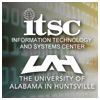Introducing LANCE, NASA’s Near-real-time Processing Capability for Aqua AMSR-E
| Title | Introducing LANCE, NASA’s Near-real-time Processing Capability for Aqua AMSR-E |
| Publication Type | Conference Paper |
| Year of Publication | 2010 |
| Authors | Regner, K, Graves, DS, Jones, S, Harrison, S, Beaumont, B, Leon, A, Conover, H |
| Conference Name | American Geophysical Union |
| Date Published | 12/2010 |
| Conference Location | San Francisco, CA |
| Abstract | Sponsored by NASA’s Earth Science Division, the Land Atmosphere Near-real-time Capability for EOS, or LANCE, system comprises five processing and distribution elements, collocated with select EOSDIS data centers. The LANCE systems use science algorithms that have been optimized to expedite processing and reduce latency of remotely sensed data for distribution to registered users. For Aqua’s AMSR-E (Advanced Microwave Scanning Radiometer for Earth Observing System), the standard data products are generated at the SIPS (Science Investigator-led Processing System), then transferred to the NSIDC (National Snow and Ice Data Center) for archive and distribution, with an average latency of 17-20 hours after observation for swath products. Collocated with the AMSR-E Science Team Leader, the AMSR-E SIPS has generated climate research quality data products since the launch of Aqua in the spring of 2002. Now, with the implementation of LANCE in the summer of 2010 at the SIPS, AMSR-E swath and daily products, with noted limitations, are generated and available to registered users via standard FTP with an average latency of less than 3 hours after observation. While not a substitute for research quality products, near-real-time products are in high demand in fields such as numerical weather prediction and forecasting, monitoring of natural hazards, disaster relief, agriculture and homeland security. This poster focuses on the AMSR-E SIPS’ implementation of LANCE, including a preview of the new brightness temperature algorithm developed specifically for near-real-time processing; characterizes the near-real-time products with respect to the standard products, thus enabling end users to select the best data set for their application; and provides information on data access and resources for both the standard products and near-real-time products. |
- Log in to post comments
- Google Scholar




